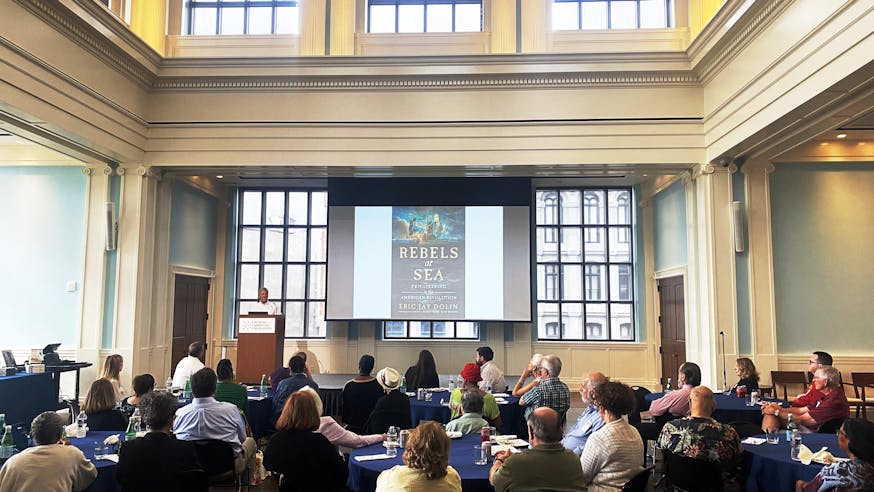Black Founders
From James Forten to Force 10, the Craft of Traditional Sailmaking Continues Today

Nahja Chimenti and Sean Bunting operate Force 10 Sailmaking and Rigging with Nahja's father Wayne Chimenti. Force 10 is a small, family business focused on making traditional sails on Marrowstone Island in Puget Sound, Washington state. The Museum asked Nahja and Sean to reflect on their work, compare their workshop to the recreated sail loft that was in our Black Founders: The Forten Family of Philadelphia exhibit, and consider how James Forten's Revolutionary-era sailmaking work is similar to their own.
Can you tell us about Force 10 and how you became a sailmaker?
Nahja: Force 10 Sailmaking and Rigging is my parents' creation. My father started sailing tall ships professionally right after college and never looked back. He rose up the ranks the old-fashioned way — the hawse-pipe route as they say in the industry. He sailed on ships around the world, from America to Europe, Australia, and beyond. Eventually he was operating as a captain aboard tall ships across oceans. Along the way his passion for bosunry (the art of tall ships care and repair) grew, and he sought knowledge about the art everywhere throughout his travels.
In Australia, he and his wife Nicole met George McNeil, part of a family of traditional sailmakers going back several generations. He mentored them through their first full set of sails, and Force 10 Sailmaking and Rigging was born. Since then, they have made sails for countless tall ships both in the United States and abroad, including the new construction of sails and rigs for at least three ships. In the late ‘80s, they settled on a lovely island in Northwest Washington state, giving Force 10 a home port for the first time.
I grew up in and out of the loft from infancy. As a child, I learned how to use a palm, how to lay grommets, and how to whip lines. However, I did not seriously consider taking over the business until my early 20s. By then, my mother’s hands were starting to suffer from work-induced arthritis and she wanted to retire. Over the course of a few short years, I learned the ropes of the business and stepped into her shoes. My father has been more than happy to put the lion’s share of the work on my plate. Now, I manage the business, do a majority of the sail construction, and teach those itinerant tall ship sailors who drop through our loft to learn something of our craft. Luckily, one of those itinerant sailors fell in love with the sail-wright as well as the craft and decided to stick around.
Sean: I started working on and became fascinated with tall ships and traditional sailing, seamanship, and the traditions involved in the work done and the methods used in the age of sail. I had heard of Force 10 because they had made sails for the Star of India, a ship I sailed on. What began initially as a short apprenticeship rapidly became my trade as I fell in love with the art.

What was your reaction to seeing the recreation of James Forten's sail loft in the Museum's Black Founders exhibit?
Sean: My first thought was, “Hey! I could go work there right now!” The bench and the tools all look very similar to mine. Maybe a bit too new (all of our benches are deeply and enthusiastically scratched, nicked, chipped, and worn) and there aren't scraps of cloth and little nips of extra thread everywhere, but I was really touched by how familiar it all is. I want to visit!
Nahja: Likewise, it was all very familiar. It amazes me to think that this trade still functions very similarly to how it did 200-300 years ago. While some of the sails we make are considerably more modern, many of the same tools are used even on those sails. The palm reigns eternal!
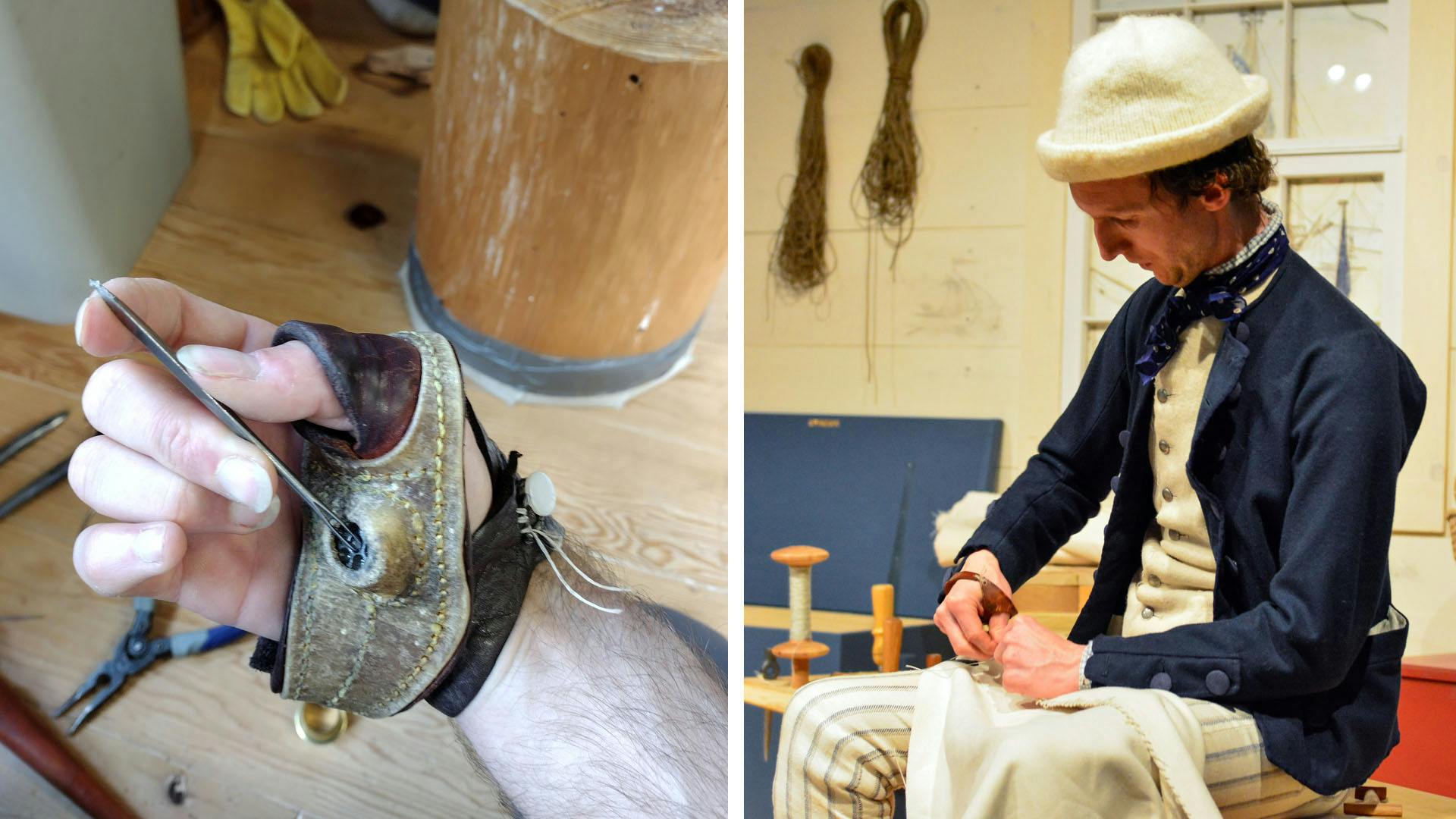
What are similarities between your work and that of early American sailmakers like James Forten?
Sean: Our sails are designed by hand on paper with historical techniques, rules of thumb, formulae, and well-practiced intuition. The design is informed by experience, and improvement in our art comes from the study of how our work does on the water, exactly how it was done in the past. No computers assist in our design or help with aerodynamics of the sails (although we do welcome the assistance of calculators).
We still work in a loft much like Forten’s with tools that he would find familiar, sitting on sailmakers benches, using tree stumps as work surfaces. Our methods of assembling sails are very similar outside of the use of sewing machines. Our eyelets, corner pieces and patches are all done by hand with techniques that James Forten would recognize; however, there is no “one way” to make historical sails and personal techniques and methods mean that many sails had personal touches and differences. We constantly iterate and improve our sailmaking but in such a way that the sailmaker of old did, with experience and observation of how the sails perform.

How does the training or apprenticeship process work today compared to how James Forten learned to be a sailmaker?
Sean: In terms of Force 10 and traditional sailmaking today, the apprentice of yesterday and today probably have a lot of common ground. Both historically and today, the process involves starting with basic tasks and working your way up gradually under the close guidance and tutoring of a more experienced sailmaker. Over time, as an apprentice gains more confidence with basics and shows aptitude, they are brought along into the more critical and complicated aspects of sailmaking.
Apprentices today find a difference, however, in the comparative rarity of our art and its lack of demand when compared with modern industrial sailmaking. The apprentice of yesterday was learning a trade that offered good, steady work and a decent wage in a large and sought-after brotherhood of tradesmen. Today's historical sailmakers are people who do it out of love for the craft and preservation of a long heritage and tradition.
Nahja: There are very few sailmakers in the world today who specialize in tall ships and traditional sails. It certainly is not a trade you can learn in any school. Most people who do this craft professionally have settled into it out of a career in working on tall ships. In this vein, we here at Force 10 encourage crew from the ships we work for to come visit us and learn what they can. They learn and practice first basic, then more advanced skills. They observe and participate in whatever project is current, and of course do many of the traditional apprentice tasks, like cleaning the loft and tools.
Most of them go back to their ships with a better understanding of how to care for and repair their sails, as well as a greater respect for the sails themselves — an often taken-for-granted component of the ship. Every once in a while, they stick in the craft and become sailmakers for good.

What are the significant differences between traditional sailmaking today and that of 200-plus years ago?
Sean: Perhaps most apparent is the difference in materials used today. Most sails made now use modern synthetics and materials that last much longer and demonstrate extreme strength when compared to historical natural fibers. We just learned that a suite of our sails is still seeing active use at 20 years old. Natural fiber (like cotton, hemp, etc.) sails would not achieve anywhere near that lifespan. Sailmakers 200 years ago would also not have had the chance to enjoy the use of a sewing machine, which vastly simplifies and speeds up the sailmaking process.
Beyond the structural differences, in the past, sailmaking was a large and critical part of the maritime economy. Thousands of large and small sailing ships plied all waters of the world in trade, transport, and military power at sea, all of them constantly needing new sails. The sailmaker of yesteryear was in company with other prominent tradesmen on Main Street.
The pool of practicing, competent historical sailmakers today is very small which means, at least for Force 10, that the sharing and preservation of these methods and skills is a huge part of the work. Historically, sailmakers were relatively secretive and insular, and a sailmaker could look forward to a great need for their skills. Sailmaking historically had economic and military implications that made improvements in sailmaking important and worth keeping “in house.” Today, our work has no such weight. Outside of the few classes of serious racing boats, most sailmaking has no need to be kept secret.
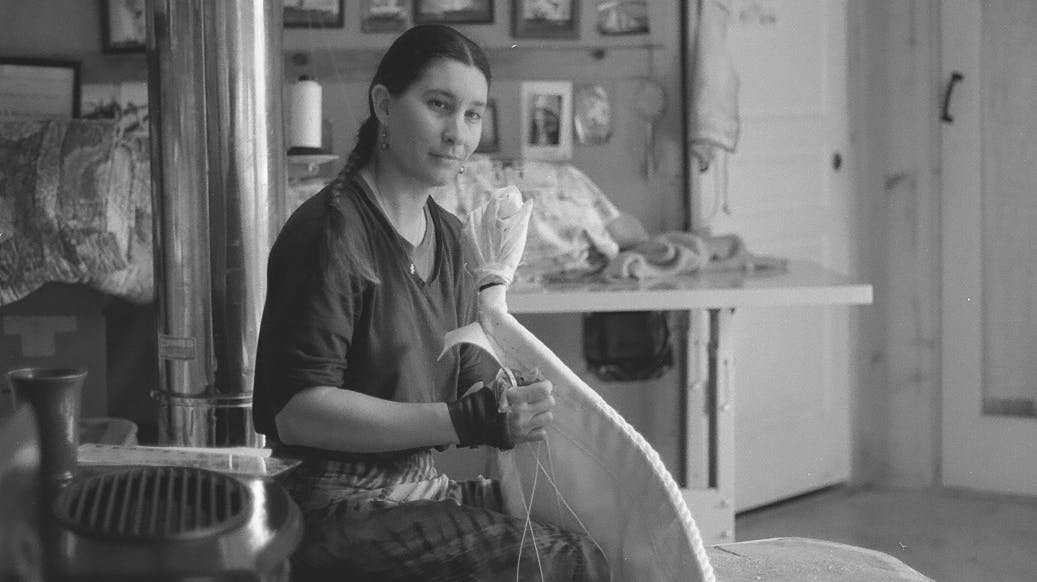
Why does preserving these skills matter?
Sean: My answer to that could be said by anyone who practices and loves a tradition or craft. The person who carries on a tradition is keeping alive and continuing a thread that spans back in time to the people of yore. These skills and techniques have been handed down to us and to put them down lets die a certain fire that gives richness and value to the human condition.
My skills can trace their path back through multiple generations of sailmakers who emigrated to Australia from England and beyond to the maritime heritage of thousands of sailors and sailmakers. Those skills connect to the journeys of the people involved and the meaningfulness of their work. In my own way, with my own hands, I am preserving a connection with our past.
Nahja: I agree that there is a great magic and value to maintaining a heritage craft. Beyond that there is also great value in not losing sight of the low-tech path. A standard modern sail might be comparatively cheap and quick to make, but once it goes bust at sea, you have to fall back to old, low-tech methods to repair it underway. A traditional sail or traditional rig can be repaired or rebuilt with simple tools and supplies, anytime, anywhere. As a craftsperson, I feel there is great power in that which can be done by hand, the value of the skill and the independence it gives the mariner.
What inspired you most about the story of James Forten?
Sean: Everything I learn about James has given me something to admire. His early life and his technical ability, along with his journey learning the trade of sailmaking and running the loft inspire me to continue my work and become a great sailmaker in my own right while always striving to improve my skills in all areas of life. His obvious dedication to his craft means a lot to me, especially during challenging moments in the sail loft.
His social activism and readily apparent empathy and outspokenness inspire me greatly as well. He and people like him leave a legacy and set an example that we all should wish for. To try to further the betterment and empowerment of everyone around us. I only learned of him fairly recently in life but he is someone I look to, to help me in my own journey of social awareness and being a kinder, better person.
Nahja: I appreciate that Forten led by example as well as voice. While he was active and outspoken in the best of ways, he also, within his business and relationships, created the future for which he campaigned. He was a man to be admired. Who earned all he had, in wealth and reputation, by hard effort, good judgment, and a good sense of public relations. A person to be emulated both as a sensitive and aware activist and as a business manager.
Learn More
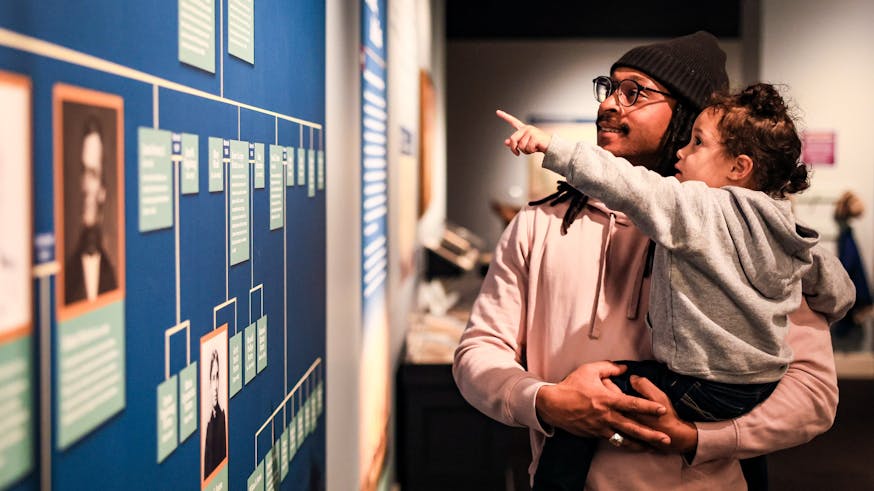
Black Founders: The Forten Family of Philadelphia
February 11 - November 26, 2023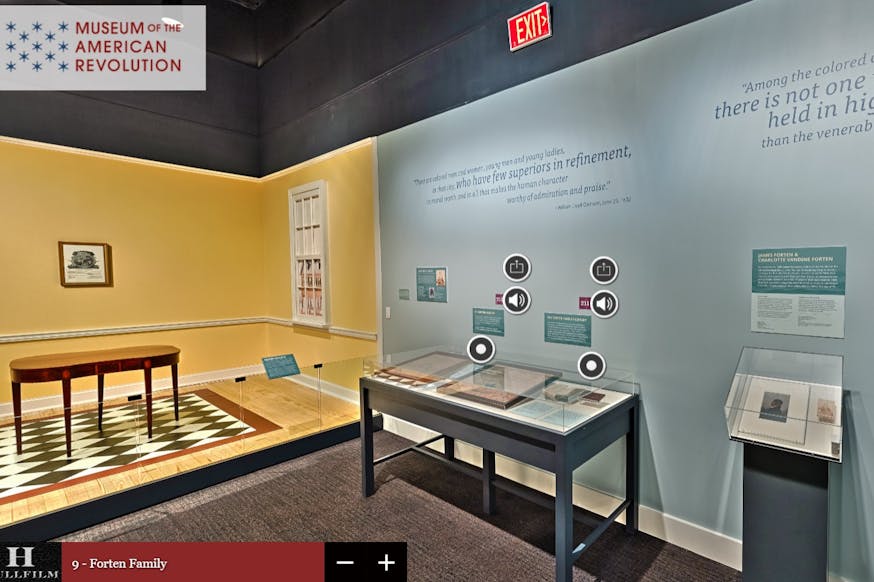
Black Founders Virtual Tour
